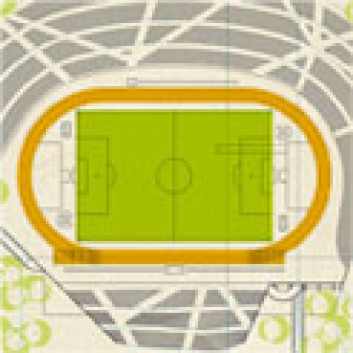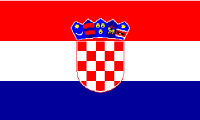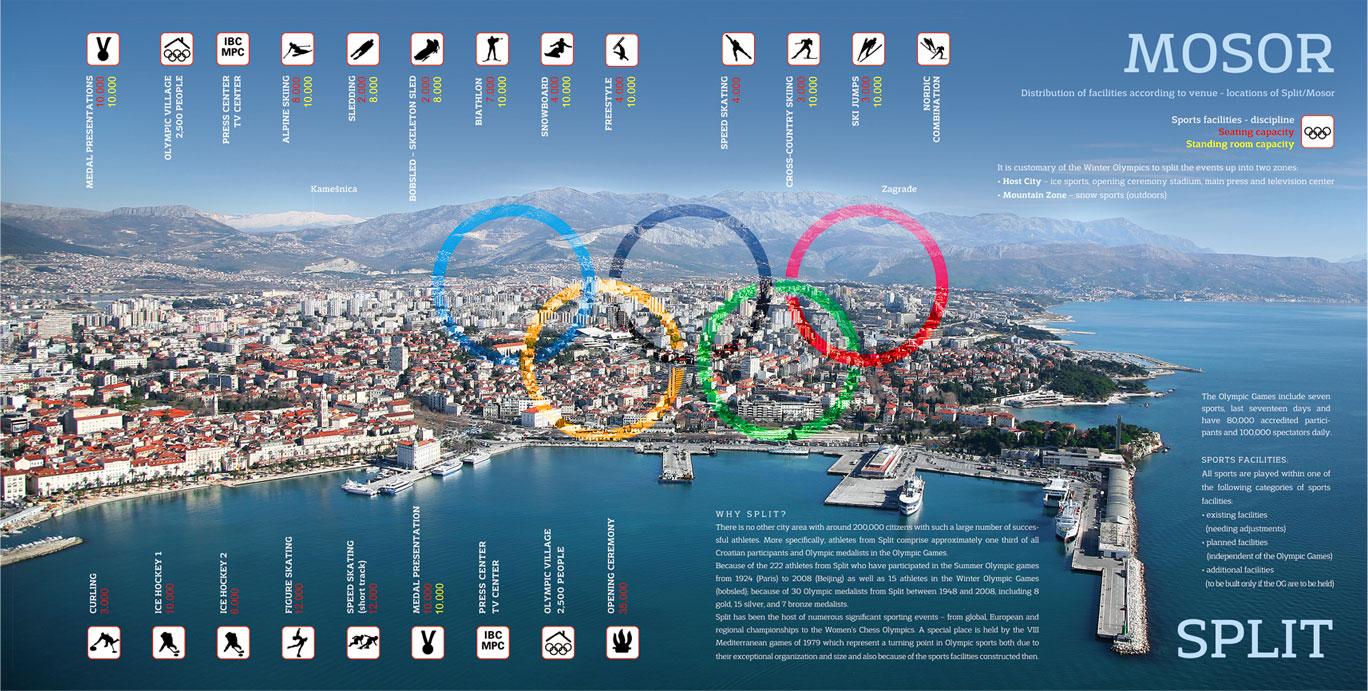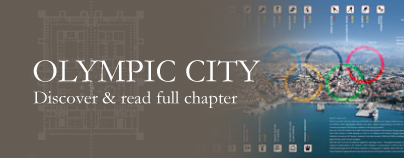THE NEW DIOCLETIAN'S PALACE
OLYMPIC CITY · MOSOR
SPLIT 22 CROATIA
THE WINTER
OLYMPIC GAMES
THE WINTER OLYMPIC GAMES are an exceptional sporting event held every four years. They include winter sports on snow and ice such as alpine skiing, ski jumping, cross-country skiing, figure skating, bob-sledding, and ice hockey. Some sports, such as downhill skiing, figure skating, ice hockey, Nordic Combined, ski jumps and speed skating, have been standard Olympic disciplines since 1924.
Transportation infrastructure Winter Olympic Games
According to the criteria of the IOC’s Evaluation Commission, a city’s ability to host the Winter Olympic Games (WOG) hinges on:
– the ability to implement a large and complex project in terms of infrastructure and resources in relation to the natural geomorphology and topography of the city and region
– the proposed concept for the WOGthe existence of a feasible plan for implementing the project – support the project has from the public, the country, and local communities as well as other stakeholders
– the ability to carry it out – organization, planning, and operative performance
– the ability to achieve excellent results in regards to the standard of services and values promoted through Olympism
Spatial Study PROGRAM

The building’s constitution makes it the Zagrađe Olympic Center’s main sporting facility. The polyvalent stadium seats up to 25,000 spectators and potentially twice as many if Volujak’s slope is used as a natural grandstand. The stadium’s silhouette conforms to Zagrađe’s contours with its terraced drywall grandstand evoking cascading Dalmatian vineyards.

The hybrid nature of the stadium is highlighted with the functionality of its lower levels. Beneath the level of the open field are, along with an Olympic pool and diving pool, a sports academy and fitness center facilities as well as facilities which can serve for competitions, training, and recreation


